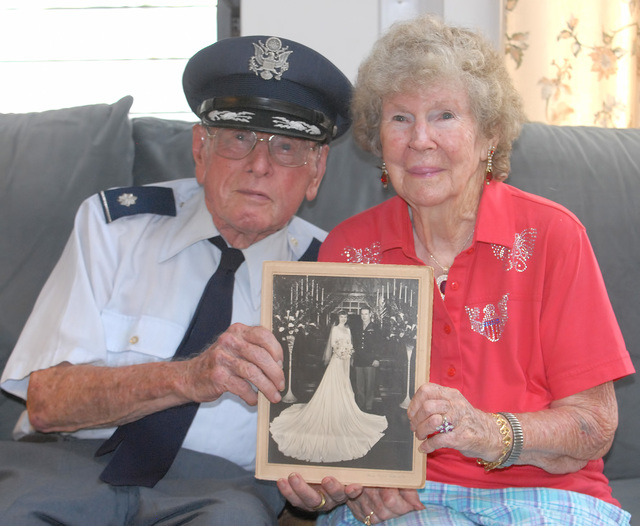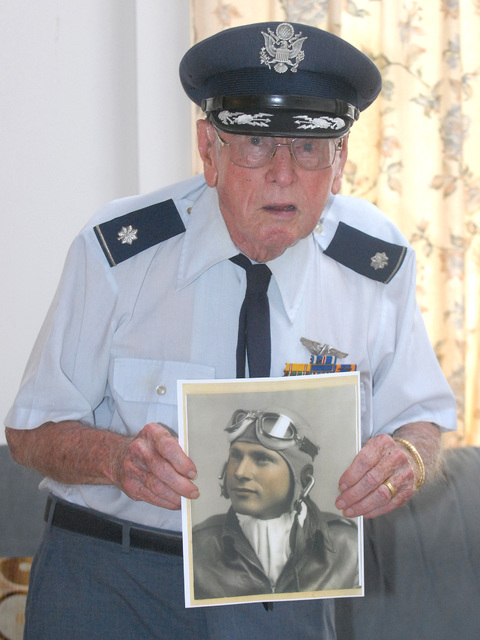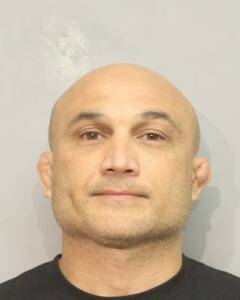KAILUA-KONA — The skies erupted in blinding flames and ear-ripping cacophony over the munitions town of Schweinfurt, Germany, on Oct. 14, 1943 — a day that would become known to history as “Black Thursday.”
Henry E. Tessien, second lieutenant and bombardier of the 96th Bombardment Group, manned a .50-caliber machine gun in the nose of his B-17 bomber — tasked with the destruction of a plant that manufactured ball bearings for Nazi war machines.
Some time into the battle, Tessien watched as a German JU-88 fighter bomber tore through the chaos on a line toward his plane, a typical mode of attack. Tessien opened fire and seconds later, the enemy aircraft exploded in front of him.
“I got him! I got him!” Tessien later heard on a static recording, which had captured his voice moments after shooting down the JU-88.
Allied forces deployed 262 B-17 bombers to smash German industry in Schweinfurt, each crewed with 10 men. When the fighting subsided, 65 of those planes had been shot down and more than 600 troops were captured or killed. Tessien was not among them.
“It was the greatest battle of the war,” Tessien recalled. “You were always nervous. You were not afraid, but you were always nervous.”
Capt. Richard M. Jerger, Tessien’s pilot, and his crew navigated the skies deep in enemy-occupied territory for more than eight treacherous hours before landing at an air base in southern England.
Their airship had lost three of its four engines, the fourth engine dying moments after the B-17 touched down. All 10 crew members aboard survived, but the plane — riddled with bullet holes — never took to the air again.
Tessien, of course, did. Schweinfurt was the 22nd mission of his tour in Europe, which took him to battles in Germany, France, Belgium, Holland, Norway and Africa. Tessien, who arrived in England on Easter Sunday 1943, flew three more missions before heading home.
His final mission — Mission X, as it is listed on his official service itinerary — was completed on Christmas Eve of the same year. Tessien, who earned the rank of captain by war’s end, would never fly a combat mission again.
“I had a very merry Christmas,” he said.
It was for his actions over Schweinfurt that Tessien was awarded his second Distinguished Flying Cross. His first came upon the completion of his 20th mission over Emden, Germany.
“For extraordinary achievement while serving as a Bombardier on 20 bombardment missions over enemy occupied Continental Europe,” the reason was written in a letter commissioned at the behest of Brig. Gen. F.L. Anderson. “Displaying great courage and skill, Lieutenant Tessien, fighting from his gun position has destroyed one enemy plane, warded off many enemy attacks and has materially aided in the success of each of the twenty missions.”
During his months flying for Allied forces, Tessien also earned the Air Medal and three oak leaf clusters. On Saturday in Honolulu, the 96-year-old Kailua-Kona resident will be honored one final time.
Tessien and Honolulu resident Joseph Obayashi will be awarded the French Legion of Honor Medal — France’s highest military honor — for their service in the liberation of the country from Nazi occupation.
Guillaume Maman, the honorary consul of France in Hawaii, will present Tessien with his medal in the Solarium Room at 15 Craigside on Oahu. The audience will include two United States generals, local political leaders and international dignitaries.
“I am just happy,” Tessien said of his selection to receive the distinguished honor. “I am being well paid for my action over France.”
Tessien, who was drafted in 1941 at age 21, had applied initially for the aviation cadets to become a pilot. A bout with measles resulted in his elimination from pilot training, and so he became a bombardier — aiming the bombs and manning guns in the nose of warplanes. He completed his training in Albuquerque, New Mexico, in November 1942 before crossing the Atlantic.
After returning home from the war, Tessien met his wife, Suzanne, in a train station in Chicago after she had lost a box of candy her aunt had given to her.
“I asked a military policeman where a candy store might be,” remembered Suzanne, who turns 93 later this month.
“Eddie (Tessien’s preferred moniker) overheard me and said to the MP, ‘I will take over from here.’”
The two found they were traveling on the same westward train for two days, Tessien on his way to Oakland and Suzanne to Portland, Oregon.
They were married just three months later.
Tessien spent the rest of the war developing secret weapons — first in Tonopah, Nevada, and later in Utah. He worked on heat-seeking technology and television bombs, operated by a fighter via joystick who guided the bomb to its target with the aid of a camera.
An active reservist until his retirement as a lieutenant colonel in 1970, Tessien’s day job was with Western Union. He served in the Korean War as a communications specialist, helping install a worldwide communications system for the Department of Defense — including a relay station in Hawaii.
After spending three days on each island, Suzanne had her mind made up.
“We liked the elbow room on the Big Island,” she said.
Every year, the couple would travel from Oakland to Hawaii. At first, it was for a few weeks at a time. Then, a few months. Finally in 1997, they bought their home on the Big Island where they’ve lived ever since.
Now in their 90s, the Tessiens don’t spend a lot of time island hopping, but receiving France’s highest military honor certainly constitutes a weekend trip to Oahu.
“We are thrilled to death,” Suzanne said with a smile.
Email Max Dible at mdible@westhawaiitoday.com.









